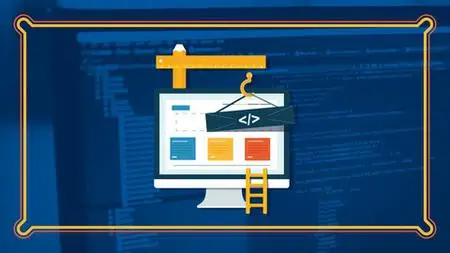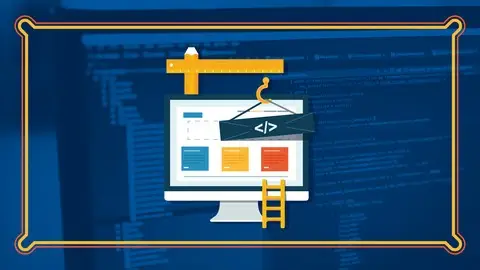Sap Lumira Designer 2.X (Design Studio)
Last updated 6/2019
MP4 | Video: h264, 1280x720 | Audio: AAC, 44.1 KHz
Language: English | Size: 2.10 GB | Duration: 5h 15m
Last updated 6/2019
MP4 | Video: h264, 1280x720 | Audio: AAC, 44.1 KHz
Language: English | Size: 2.10 GB | Duration: 5h 15m
Building Dashboards and Applications using SAP Lumira Designer 2.X (Design Studio)
What you'll learn
Building Dashboards and Applications using SAP Lumira Designer 2.X (Design Studio)
Positioning and Architecture
Working with Data Sources , Cross tabs and Info chart
Working with Navigation Panel and Dimension filter
Working with Container,Tab , Grid, Text and Image components
Creating dynamic behavior with radio buttons
Introduction to simple scripting
Using scripting with List Boxes and Radio Button Groups
Using conditional execution statements to enhance your script
Displaying Report Information, master data values and using local variables
Working with Geo Maps and Scorecards
Interoperability between Lumira Discovery and Designer with the LUMX format
Requirements
General Understanding of Enterprise reporting ecosystem
Access to the tool to follow along with the sections
Description
Hello there and Welcome to Lumira Designer, previously known as SAP Design studio. Now SAP has combined both Lumira and Design studio into one add on to the BI server. The new names are Lumira Discovery and Lumira Designer.Lumira Designer is fully loaded and extendable. You can create enterprise grade, Interactive Dashboards and Analysis applications to name a few. It comes dialed in with 8 categories and 44 components including charts, container components, filters, UI components, geo maps, Scorecards and many more. It has advanced and easy to use scripting capabilities to build interactive functionality between the components, data sources and reports. Different users can easily collaborate and corroborate in the development of the reporting stories(requirements) and enhancing the dashboard and application design. It is possible to import 3rd party components and geo maps to add your own flavors and specific additions.Engaging Teaching: Expressive and immersive teaching with demonstrations and learning toolsSmall, purposeful videos, packed with information, designed specifically for a virtual self paced audience.Sections have been designed for the student to follow along , with attention to minor details
Overview
Section 1: SAP Lumira Designer 2.X - Positioning, Architecture and Data sources
Lecture 1 Positioning, Architecture and Data sources
Lecture 2 How to access Lumira Designer and it's configuration's
Lecture 3 Local Mode Operation
Lecture 4 BI Platform Mode Operation
Lecture 5 Design Studio Walk through
Lecture 6 LUMX Format Benefits
Section 2: Introduction to Data Sources , Cross tabs and Info chart
Lecture 7 Introduction to the Use case
Lecture 8 How to Create a Data Connection to HANA
Lecture 9 How to Create a Data connection to BW
Lecture 10 Create an Analysis Application
Lecture 11 Add and configure data source 1
Lecture 12 Add and configure data source 2
Lecture 13 Add analytic components(cross tab ,info chart ) to the report's canvas
Lecture 14 Assign and configure data source to the analytic components
Lecture 15 Test the report
Lecture 16 Make cosmetic changes (color, size, font) using CSS and Properties
Section 3: Working with Navigation Panel and Dimension filter
Lecture 17 Introduction to the Use case
Lecture 18 Creating a new application from your 1st application
Lecture 19 Adding Navigation Panel and Dimension filter to the report
Lecture 20 Assigning data source to Navigation Panel and Dimension Filter
Lecture 21 Save and run the Report
Lecture 22 Test the functionality of The dimension filter and the navigation panel
Lecture 23 Testing advanced Features in the Navigation panel
Section 4: Working with Container,Tab , Grid, Text and Image components
Lecture 24 Introduction to the Use case
Lecture 25 Creating a new application
Lecture 26 Add and edit data source 1
Lecture 27 Add and edit data source 2
Lecture 28 Inserting a Panel and adding images and text components
Lecture 29 Using CSS to make cosmetic changes to the components
Lecture 30 Inserting a Tab component and adding tabs
Lecture 31 Adding a Grid layout with 4 sections(2 rows and columns)
Lecture 32 Adding a Filter Panel, a Crosstab and two Info Charts to Tab 1
Lecture 33 Assign data source 1 to all the components in the Tab 1
Lecture 34 Adding a Crosstab, an Info Chart and a Filter Line to the Tab 2
Lecture 35 Assign data source 2 to all the components in the Tab 2
Lecture 36 Save and run the Report
Section 5: Creating dynamic behavior with radio buttons
Lecture 37 Introduction to the Use case
Lecture 38 Creating a new application from your 3rd application
Lecture 39 Add and edit data source 3
Lecture 40 Add an extra tab and add image and text components to the report
Lecture 41 Add text and data points to the report
Lecture 42 Add and program the Radio Button Group
Lecture 43 Save and run the Report
Section 6: Introduction to simple scripting
Lecture 44 Introduction to the Use case
Lecture 45 Creating a new application from your 4th application
Lecture 46 Create a button and enabling the prompt dialog box
Lecture 47 Adding script to the button to bring up the Prompt(filter)
Lecture 48 Programming the Cross tab to perform dynamic filtering based on user selection
Lecture 49 Save and run the Report
Section 7: Using scripting with List Boxes and Radio Button Groups
Lecture 50 Introduction to the Use case
Lecture 51 Creating a new application from your 5th application
Lecture 52 Adding list box to the report
Lecture 53 Populate the list boxes on startup of the application using Script
Lecture 54 Programming to enable user selection on the List box
Lecture 55 Adding, Populating and Enabling user selection for the Radio button group
Lecture 56 Save and run the Report
Section 8: Using conditional execution statements to enhance your script
Lecture 57 Introduction to the Use case
Lecture 58 Creating a new application from your 6th application
Lecture 59 Create a Button and name it
Lecture 60 Add logic to the button to hide/un hide an analytic component with script
Lecture 61 Programming the list box to conditionally hide/ un hide radio button group
Lecture 62 Save and run the Report
Section 9: Displaying Report Information, master data values and using local variables
Lecture 63 Introduction to the Use case
Lecture 64 Creating a new application from your 7th application
Lecture 65 Creating a Popup and Text boxes
Lecture 66 Creating checkbox logic, variables and assigning values
Lecture 67 Save and run the Report
Section 10: Advanced: Geo Maps. Scorecards and Interoperability
Lecture 68 Introduction to the Use case
Lecture 69 Geo Maps - Using the default Map
Lecture 70 Geo Maps - Using Multiple Geo Layers
Lecture 71 Geo Maps - Programming the interactivity on the Map
Lecture 72 Scorecard - Basics
Lecture 73 Scorecard - Available options for look and feel , data , presentation and more
Lecture 74 Scorecard - Using a Fraction pie chart
Lecture 75 Scorecard - How to use a Trend line, Delta bar, Threshold and more UI Parameters
Lecture 76 Inter- operability between Lumira discover and Designer
Enterprise Report Designers,Business Analyst,Application Consultant,Business User,Technology Consultant,Data Analyst



